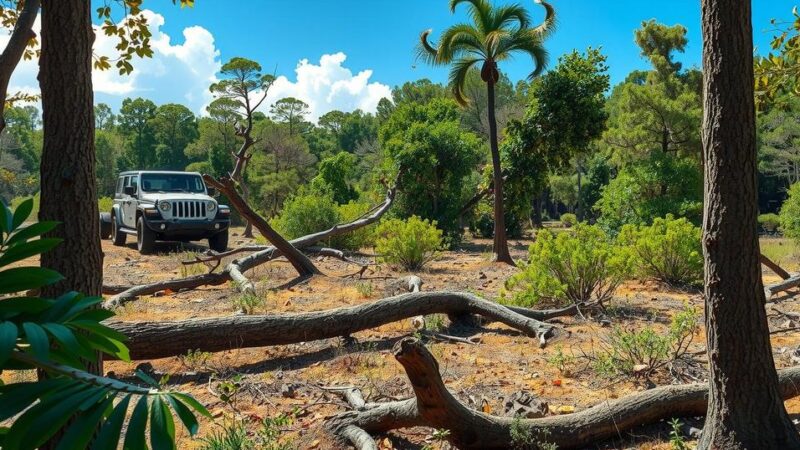Mount Mulanje in Malawi, renowned for its unique biodiversity, is facing severe deforestation and ecological challenges, particularly after the impact of Tropical Cyclone Freddy in 2023. The Mulanje Mountain Conservation Trust has initiated extensive reforestation efforts to restore the Mulanje cedar, Malawi’s national tree, alongside community-based poverty alleviation projects. Despite hardships, local efforts have shown promise, but continuous support is needed for sustainable conservation. The situation remains precarious for both biodiversity and local communities reliant on these resources.
Malawi’s Mount Mulanje, known as the ‘Island in the Sky,’ is rich in biodiversity, housing many endemic species that are vital to local ecosystems and cultural heritage. However, significant deforestation has taken its toll over recent decades, impacting both the miombo woodlands and the higher elevation forests. The Mulanje Mountain Conservation Trust, along with various partners, has been actively engaged for 20 years in efforts to restore the Mulanje cedar, Malawi’s national tree, while also focusing on poverty alleviation through reforestation initiatives.
The devastating effects of Tropical Cyclone Freddy in March 2023 accentuated the mountain’s plight, as it resulted in significant rainfall within a short period, causing loss of life and the displacement of over 650,000 individuals. Communities surrounding Mount Mulanje, already vulnerable due to illegal logging and fires, faced additional challenges from erosion, which transformed once lush landscapes into barren rock and mud. Environmental educator Kondwani Chamwala noted, “The communities, most of them are now seeing the importance of protecting what is there.”
Mount Mulanje’s unique geography stretches over 64,000 hectares, with a notably diverse high-altitude ecosystem that includes fog-laden forests and numerous rivers. Despite its designation as a UNESCO Biosphere Reserve since 1927, the mountain continues to face threats from human activities and climate change. The significant population, primarily living off subsistence agriculture, heavily relies on the forest for resources such as firewood, which has led to further deforestation and gradual loss of biodiversity.
From 2002 to 2023, the Mulanje Mountain Forest Reserve lost approximately 600 hectares, or 21%, of its primary forest coverage, a trend exacerbated by Cyclone Freddy. The destruction continues as local populations are compelled to exploit forest resources to survive amidst poverty worsened by climate change and economic challenges. Chamwala pointed out that tree cutting has become a matter of survival for many families in the region.
The Mulanje cedar, an endemic species, has suffered disproportionately, with only seven live trees identified in a 2017 survey conducted by the Mulanje Mountain Conservation Trust and related organizations. Despite stringent logging regulations, ineffective law enforcement, corruption, and environmental deterioration have contributed to the cedar’s decline. Conservationists have worked to cultivate seedlings for replanting, despite facing high mortality rates among young trees due to fires and other challenges.
Efforts to restore the Mulanje cedar have intensified in recent years with increased fire management and community involvement. The cultivation of seedlings has been moved from high elevations to community nurseries, which has generated local economic benefits through the sale of seedlings. Conservation initiatives have seen large-scale plantings since 2016, further involving local communities to ensure the sustainability of their efforts and support for fire suppression.
In summary, the conservation efforts for Mount Mulanje are crucial not only for its unique biodiversity but also for the livelihoods of surrounding communities. Tackling the multifaceted issues of deforestation, poverty, and climate change requires sustained efforts and collaboration among various stakeholders. The reforestation initiatives and community-based approaches are essential for restoring the Mulanje cedar and its ecosystem, offering hope for both the environment and the local populace. However, continuous support and funding remain vital for the success of these projects.
Original Source: news.mongabay.com






